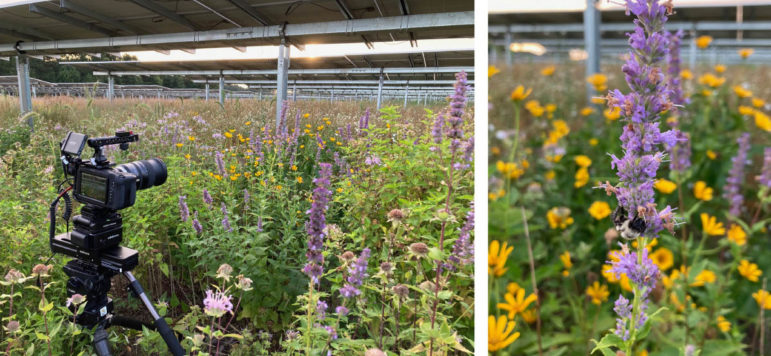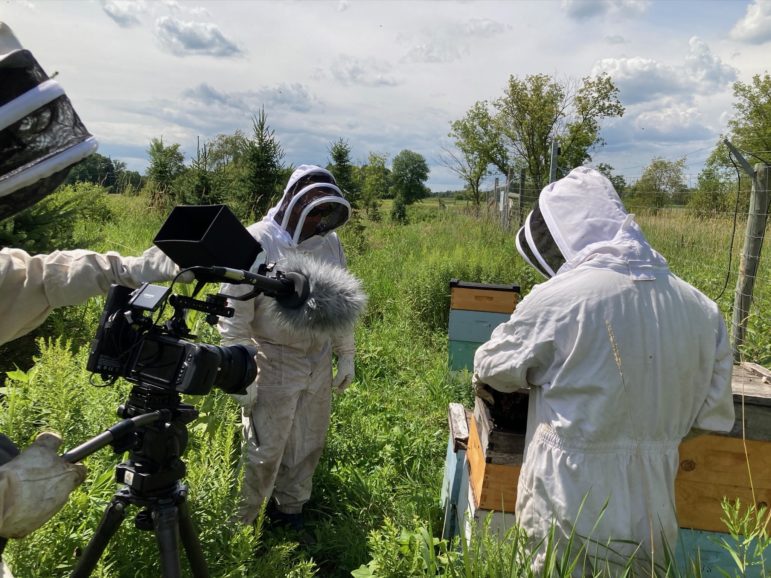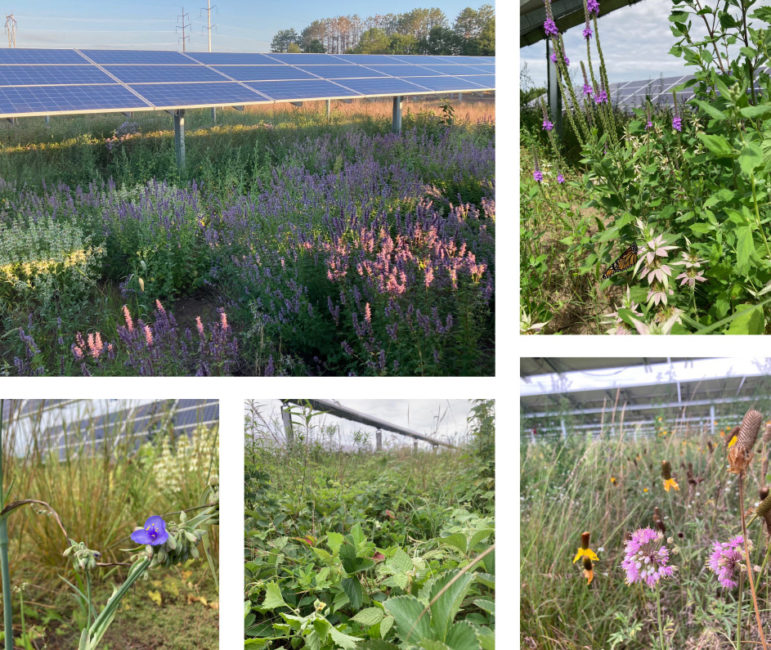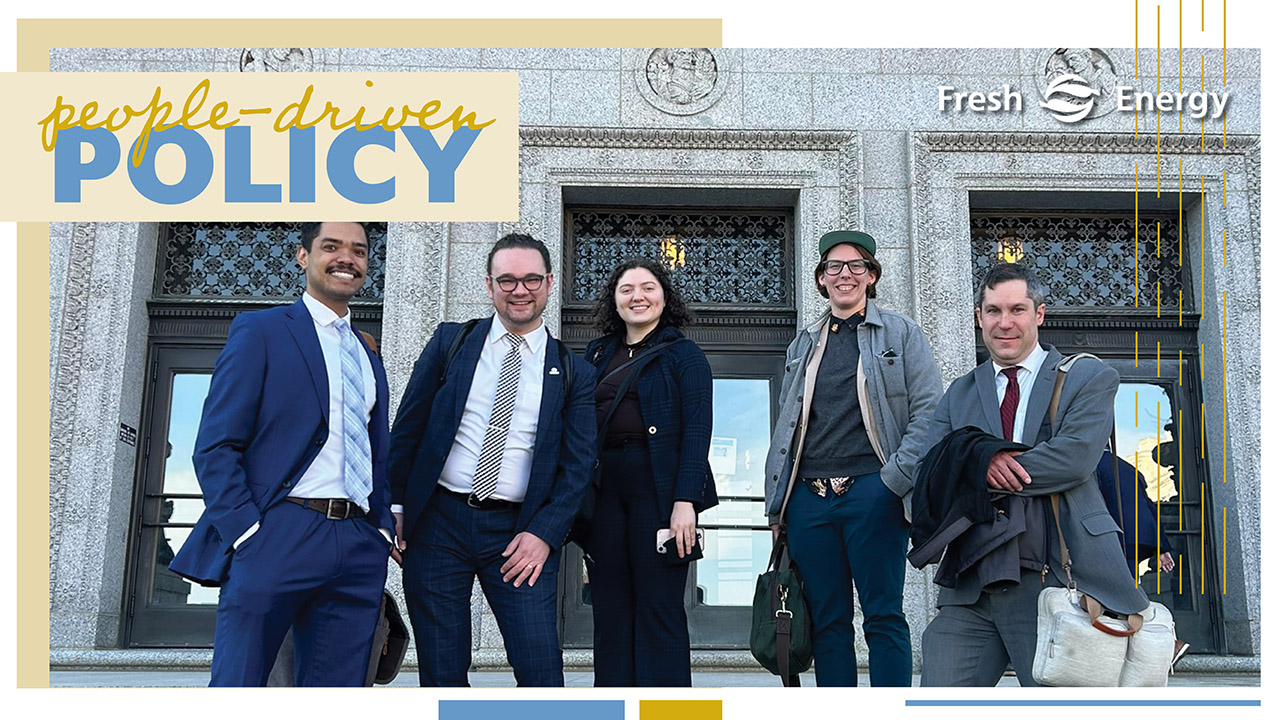
In early August, I spent three days from pre-dawn to near-dusk out in the field with colleagues and collaborators capturing the best of Minnesota’s pollinator-friendly solar arrays. The summer sun presents an amazing opportunity for photos and first-hand experiences that tell the story of how low-impact PV solar designs and management—including pollinator-friendly ground cover—are already implemented on projects ranging from utility-scale down to community-scale.
Fresh Energy’s Center for Pollinators in Energy will be sharing more photos and even video from these field days in the weeks and months ahead, but here are some informal behind the scenes photographs that I couldn’t resist sharing.

Sunrise at a pollinator-friendly large-scale solar facility located in the rural countryside. A Bare Honey apiary is located outside the fence.

Early morning blooms draw the interest of a male bumblebee (only the much larger female bumblebees have stingers, but only use them in defense of their in-ground nests).

Black-eyes Susans reach for the sun on this young pollinator-friendly community solar garden.

Apiaries outside pollinator-friendly solar farms make for great visuals and community connections, but require special preparation to photograph.

A broad diversity of flowering plants, including wild strawberries,flourish in the sun and shade of pollinator-friendly solar arrays.

The innovative team at Minnesota Native Landscapes manage what may be the single largest solar grazing practice in the United States. Flexible electric fences are used to move the sheep around between areas of a site—a best practice for soil health called high-intensity rotational grazing. Sheep aren’t trained to smile for the camera. Sometimes you need to get down in the weeds and clap to get them moving back toward the camera.
Stay tuned for future updates!

